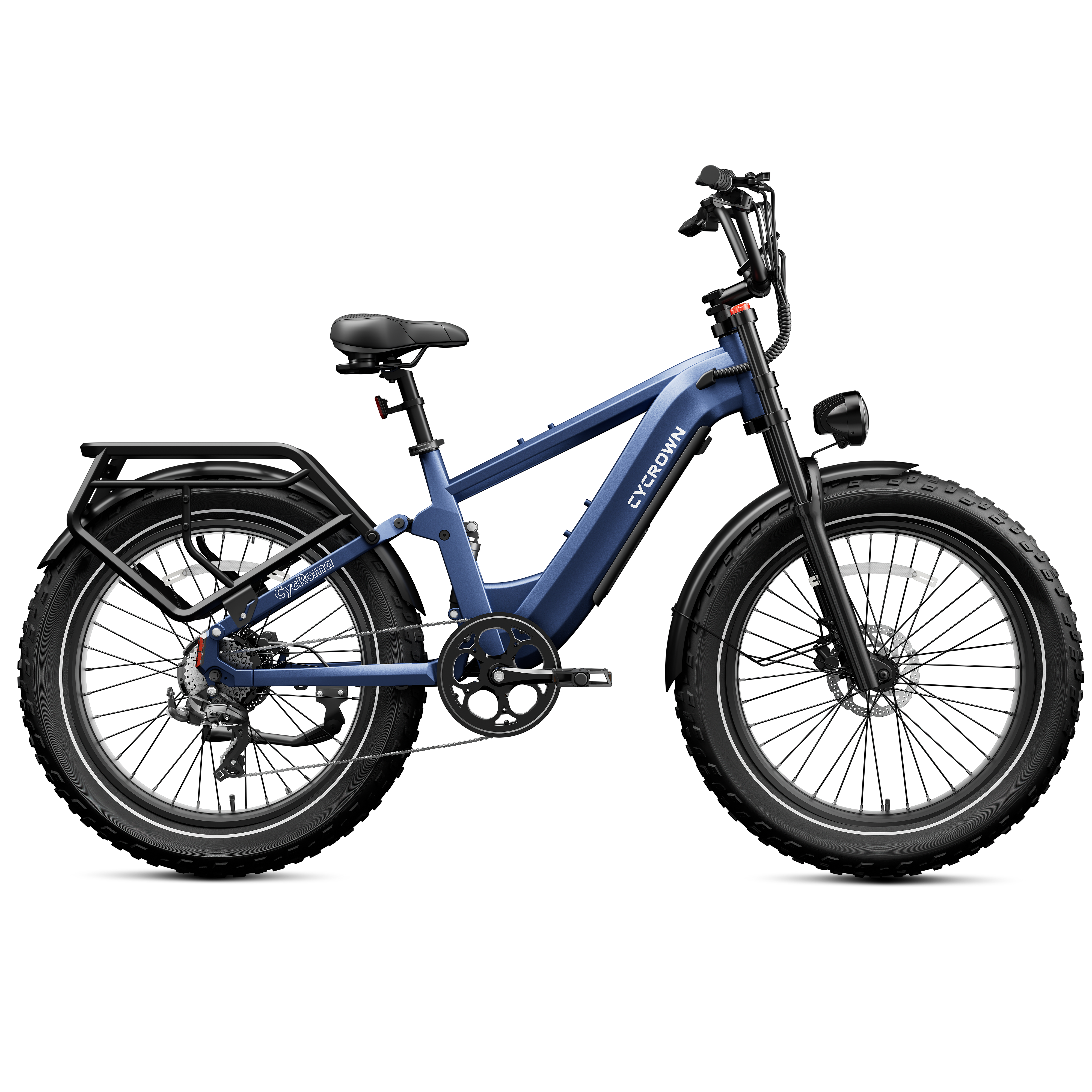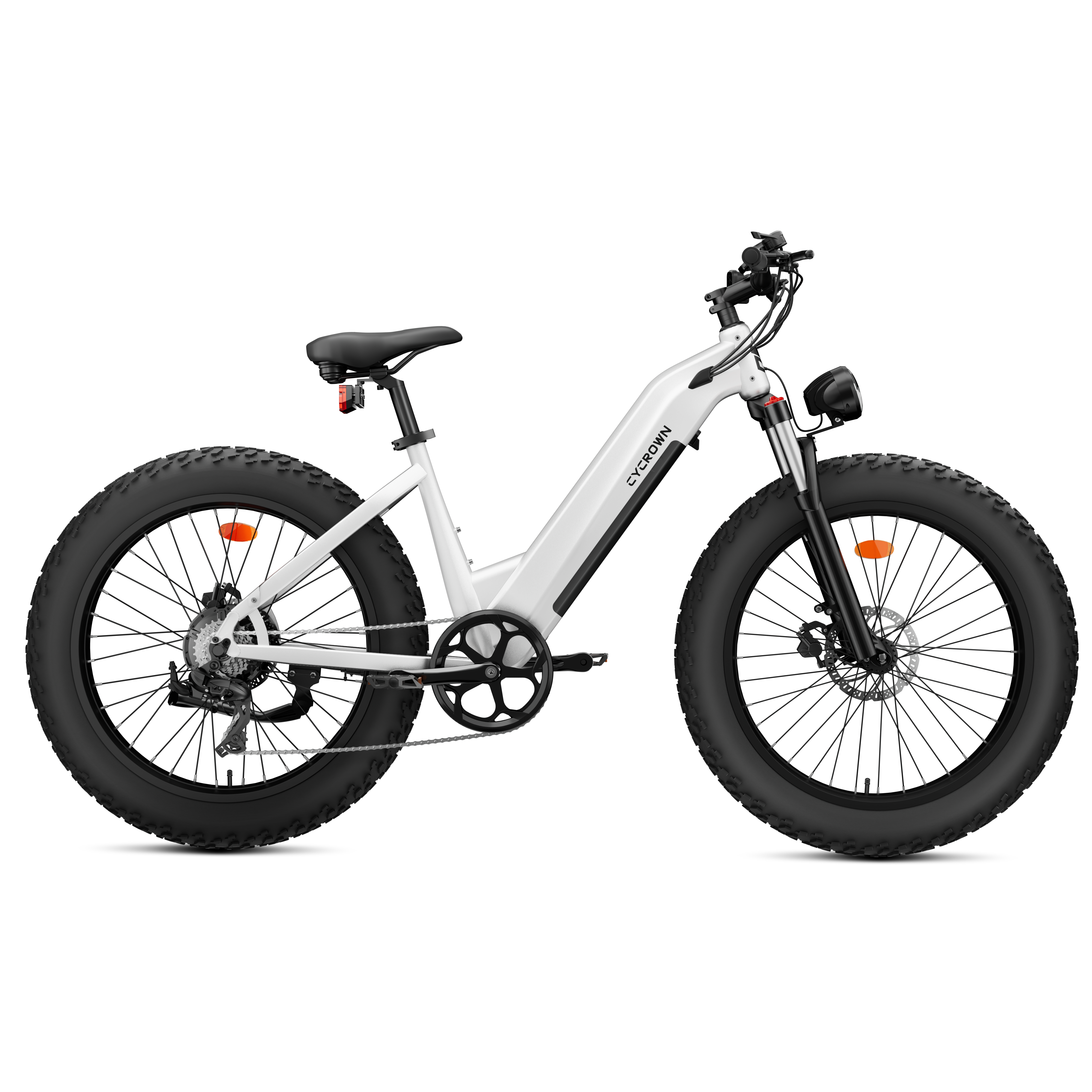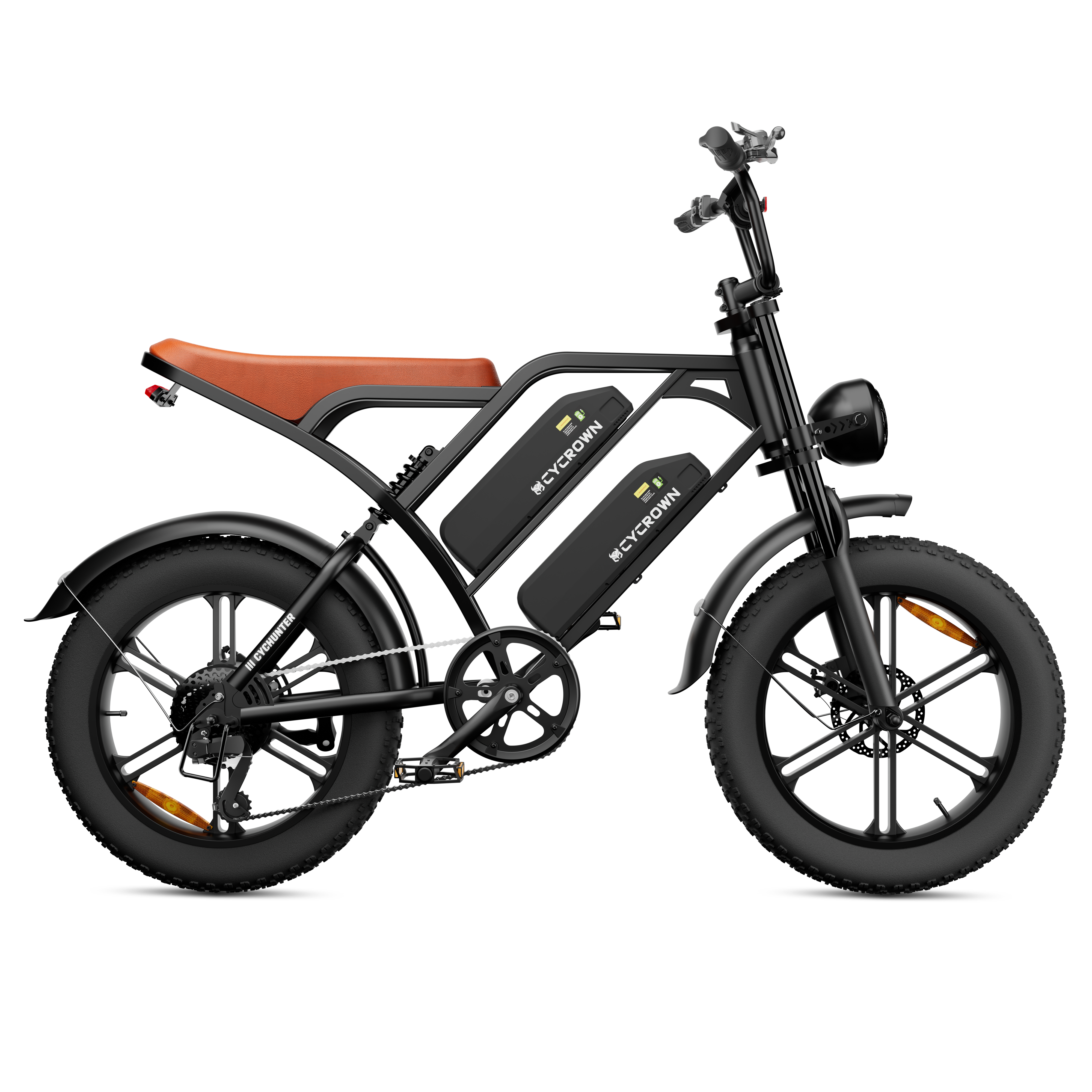If you're looking for an electric bike that provides a more natural and intuitive riding experience, you may want to consider a torque sensor ebike. A torque sensor is a device that measures the amount of pressure you apply to the pedals and adjusts the power assist of your electric bike accordingly. This means that the harder you pedal, the more assistance you'll get from the motor, which can make for a smoother and more efficient ride.
In this article, you will learn that torque-sensor ebikes are often considered more responsive and precise compared to other types of electric bikes that use cadence sensors or throttle controls. Continue reading to dig deep about torque sensor ebike and its benefits.
What is a Torque Sensor in E-bikes?

A torque sensor in an electric bike is a device that measures the amount of force applied to the pedals by the rider and sends a signal to the bike's motor controller. The motor controller then adjusts the power output of the motor to provide the appropriate level of assistance to the rider.
The torque sensor is an essential component of an e-bike's drive system, as it provides a smooth and natural riding experience by matching the motor's power output with the rider's pedaling effort. This means that the e-bike behaves more like a traditional bike, with an added boost when you need it.
Types of Torque Sensors
There are two main types of torque sensors used in e-bikes:
- rear torque sensors
- bottom bracket sensors
Rear torque sensors use a precision strain gauge that measures the amount of force applied to the pedals. Every time you push down on the pedal, the strain gauge moves, and the sensor sends a signal to the motor controller.
How Torque Sensors Enhance Ebike Performance

If you're looking for an electric bike that offers a natural and efficient ride feel, then an ebike with a torque sensor is the way to go. Torque sensors are a crucial component of modern ebikes, and they help to enhance the overall performance of the bike in several ways.
1. Providing a Natural Ride Feel
One of the primary advantages of torque sensors in ebikes is that they provide a natural ride feel. When you pedal, the torque sensor measures the force that you're applying to the pedals. This information is then used by the motor controller to adjust the motor's output power, providing the appropriate level of assistance to the rider. This means that the harder you pedal, the more support you get, giving you a more natural and intuitive riding experience.
2. Contributing to Efficiency in Power Usage and Battery Life
Another significant advantage of torque sensors in ebikes is that they contribute to efficiency in power usage and battery life. Because the motor controller adjusts the motor's output power based on the force that you're applying to the pedals, the bike is using power more efficiently than it would with a simple cadence sensor. This means that you can ride for longer distances on a single charge, which is a crucial factor for many ebike riders.
Torque Sensor vs Cadence Sensor

When it comes to electric bikes, torque sensors and cadence sensors are two of the most popular types of sensors used to determine how much assistance to provide the rider. While both sensors are designed to make riding easier, they work in different ways and can have a significant impact on the riding experience.
Torque Sensor
A torque sensor measures the amount of force that the rider is applying to the pedals and adjusts the motor assistance accordingly. This means that the more force you apply, the more assistance the motor will provide. Torque sensors are highly accurate and provide a smooth, natural riding experience. They are also more efficient than cadence sensors, as they only provide assistance when it is needed.
Cadence Sensor
A cadence sensor, on the other hand, measures how quickly you are pedaling and adjusts the motor assistance accordingly. This means that the faster you pedal, the more assistance the motor will provide. Cadence sensors are less expensive than torque sensors, but they are also less accurate. They can also drain the battery faster, as they provide assistance even when it may not be needed.
To help you compare the features of each sensor type, here is a table that outlines some of the key differences:

3 Benefits of Torque Sensor Ebikes

If you're considering purchasing an electric bike, one of the most important features to look for is a torque sensor. Torque sensors are a type of sensor that measure the amount of force you apply to the pedals, and adjust the motor's power output accordingly. Here are some benefits of using an ebike with a torque sensor:
1. Improved Control and Stability
One of the biggest advantages of torque sensor ebikes is that they provide a more responsive and stable ride. The sensor measures the amount of force you apply to the pedals, and the motor responds with the appropriate amount of power. This means that you have greater control over the bike, and can make more precise movements. Additionally, torque sensors can help prevent accidents by providing a smoother and more stable ride.
2. Energy Efficiency
Another important benefit of torque sensor ebikes is that they optimize battery use by adjusting to the rider's effort. This means that the motor only uses as much power as is necessary to assist the rider, which can extend the battery life significantly. This is especially important for long rides, where you want to be sure that you have enough battery power to get you to your destination.
3. Riding Experience
Perhaps the most appealing benefit of torque sensor ebikes is that they provide a more bike-like feel. Unlike other types of electric bikes, which can feel clunky and unnatural, torque sensor ebikes feel more like traditional bicycles. This is because the motor responds to your pedaling effort, rather than simply providing a constant level of assistance. This can make for a more enjoyable and satisfying riding experience, especially for experienced cyclists who are used to the feel of a traditional bike.
Choosing the Right Torque Sensor Ebike
When it comes to choosing the right torque sensor ebike, there are several factors to consider. Your type of use, budget, and desired features will all play a role in your decision. Here are some tips to help you make the best choice for your needs.
1. Type of Use
Consider how you plan to use your ebike. Will you be commuting to work or school? Do you plan to use it for mountain biking or off-road adventures? Different types of use require different features. For example, if you plan to use your ebike for commuting, you may want a model with a comfortable saddle and a rear rack for carrying your belongings. If you plan to use your ebike for off-road adventures, you may want a model with a suspension system and wider tires for better traction.
2. Budget
Your budget will also play a role in your decision. Torque sensor ebikes can range in price from a few hundred dollars to several thousand dollars. Determine how much you are willing to spend before you begin your search. Keep in mind that a higher price tag does not always mean better quality. Look for models with good reviews and a reputation for reliability.
3. Desired Features
Consider the features you want in your torque sensor ebike. Do you want a model with a powerful motor for faster acceleration? Do you want a model with a long-lasting battery for extended rides? Do you want a model with a lightweight frame for easier portability? Look for models that offer the features that are most important to you.
4. Popular Models
Some popular models known for their effective torque sensor systems include the CycKnight Folding Electric Bike, the Trek Powerfly FS 7, and the Specialized Turbo Levo. These models offer a natural and intuitive ride, with precise control and smoother power assistance. They also offer a range of features to suit different types of use and budgets.
Installation and Maintenance of Torque Sensors
Installing a torque sensor on your ebike can be a great way to improve your riding experience. However, the installation process can be a bit tricky, especially if you are retrofitting an existing bike.
Here are some tips to help you with the installation process:
- First, make sure you have all the necessary tools for the job. You will need a bottom bracket tool, a torque wrench, and a set of Allen wrenches.
- Remove the crankset and bottom bracket from your ebike using appropriate tools. Make sure to keep track of all the parts you remove.
- Install the torque sensor onto the bottom bracket spindle, ensuring proper alignment and positioning. Connect the wires to the controller according to the manufacturer's instructions.
- Reinstall the crankset and bottom bracket, making sure to torque the bolts to the manufacturer's specifications. Double-check all the connections and make sure everything is properly aligned.
Once your torque sensor is installed, it is important to properly maintain it to ensure it continues to function correctly.
Here are some common maintenance tips and troubleshooting techniques:
- Regularly clean your torque sensor with a soft cloth and mild soap. Avoid using harsh chemicals or abrasive materials that could damage the sensor.
- Check the wires and connections for any signs of damage or wear. Replace any damaged wires or connectors as soon as possible.
- Calibrate your torque sensor regularly to ensure accurate readings. Follow the manufacturer's instructions for calibration.
- If you are experiencing issues with your torque sensor, such as inaccurate readings or intermittent signal loss, check the connections and wiring first. If the issue persists, contact the manufacturer for further assistance.
Conclusion
Torque-sensor ebikes are an excellent choice for riders who want a more connected and enjoyable riding experience. They provide a smooth and natural ride, with assistance that is tailored to your pedaling style.
One of the key benefits of torque sensor ebikes is that they provide a more efficient and intuitive riding experience. The torque sensor measures the amount of force applied to the cranks, and adjusts the level of assistance provided by the electric motor accordingly. This means that you can pedal with less effort, while still enjoying a powerful and responsive ride.
Another benefit of torque sensor ebikes is that they are suitable for a wide range of riders, from beginners to experts. They are particularly well-suited to riders who want to explore hilly terrain, or who want to ride longer distances without getting tired.
Frequently Asked Questions
What does a torque sensor do on an ebike?
A torque sensor is an essential part of an ebike that measures the amount of force that the rider applies to the pedals. The sensor then sends a signal to the motor controller, which adjusts the motor's output power, providing the appropriate level of assistance to the rider. This means that the harder you pedal, the more assistance you get, making your ride smoother and more efficient.
Which is better cadence or torque sensor?
While both cadence and torque sensors have their advantages, torque sensors are generally considered to be better because they provide a more natural and intuitive riding experience. Cadence sensors only measure the speed at which the pedals are turning, while torque sensors measure the amount of force that the rider is applying to the pedals, which allows for more precise control and a smoother ride.
What does a torque arm do on an ebike?
A torque arm is a small device that helps to prevent the motor from spinning out of control when the rider applies too much force to the pedals. It is attached to the frame of the ebike and provides an additional point of support for the motor, which helps to distribute the load more evenly and prevent damage to the frame.
Where are torque sensors used?
Torque sensors are used in a wide range of applications, including electric bikes, electric scooters, and electric cars. They are particularly useful in situations where precise control is required, such as in industrial machinery, robotics, and automation systems.
Where is the torque sensor located?
The torque sensor is typically located near the bottom bracket of the ebike, where it can measure the force that the rider is applying to the pedals. It is usually integrated into the frame of the bike and is not visible from the outside, which helps to protect it from damage and wear.










